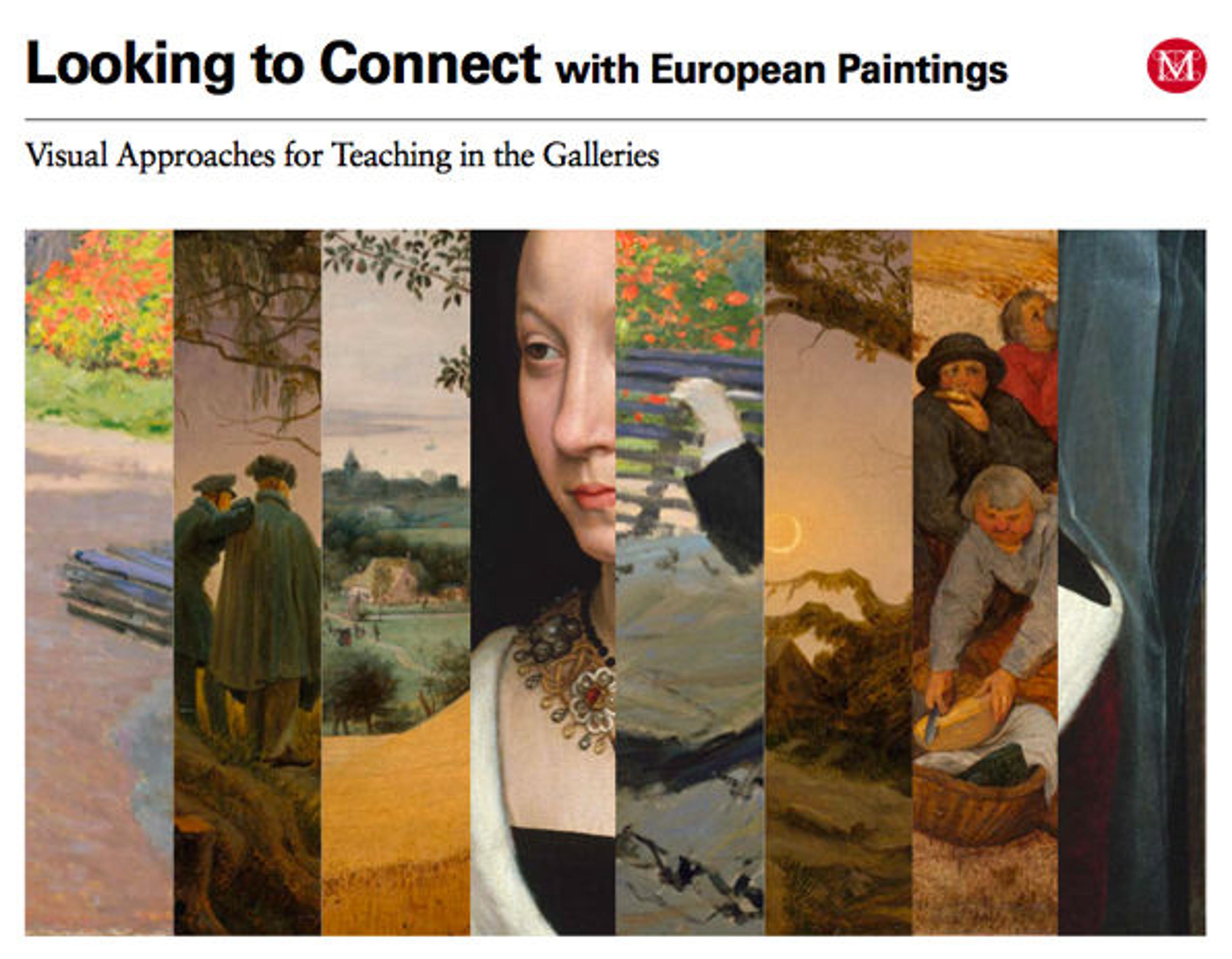«As an art historian, my goal is to offer information and insight. As a teacher, I hope to encourage people to discuss, discover, and explore. Where is the balance between these things in museum teaching and interpretation? When and how is information meaningful? How do we help visitors look closely and relate to what they see? These are some of the questions that guided me during my Kress Interpretive Fellowship at the Met this past year. My main project was a thematic, digital publication focusing on teaching adults in the European Paintings collection. The exciting final result is Looking to Connect with European Paintings: Visual Approaches for Teaching in the Galleries—it has just been released and is available as a free download (PDF) within MetPublications.»
The recent reinstallation of the European Paintings galleries was the impetus for my fellowship project, because it provided the perfect opportunity to look at the collection—literally and figuratively—from new perspectives. In creating and writing Looking to Connect, I wanted to help those who teach in the galleries to look closely at paintings, and to inspire creative, evocative connections between works of art that are based in the visual elements of the objects. The end goal—one that is shared by the staff I worked with from the Education, European Paintings, and Paintings Conservation departments—is to enable people to trust their own observations and to connect what they see to their own lives, to art of other cultures and time periods, and even beyond the Museum.
Rather than prescribe a single approach to teaching, we designed the publication to provide ideas and entry points to the European Paintings collection so that it can used by anyone, regardless of teaching style or level of familiarity with the works of art. A thematic approach seemed the best way to offer such inspiration and support. In collaboration with my supervisors (Maryan Ainsworth, Kathy Galitz, Michael Gallagher, and Jackie Terrassa), I developed four themes: Illusion, Borders, Movement, and Illumination. We then chose five to six paintings in the collection as examples relating in different ways to each theme, with the belief that the paintings should never become illustrations for a theme—instead, the themes must help users look more closely at the paintings.
As you explore Looking to Connect, if any of the painting examples surprise you, if you think one or more should be switched to another theme, or if entirely different examples come to mind—good! That is the exactly the point. You can look at virtually any painting from multiple perspectives to find new visual solutions at work. By beginning with the visual, then adding contextual information, we see art history embodied in the object. Whether you are teaching in the Met's galleries, leading a course outside the Museum, or exploring the collection online, Looking to Connect will serve as a launching pad for finding your own new approaches to teaching and looking at paintings.
Related Links
Looking to Connect with European Paintings: Visual Approaches for Teaching in the Galleries (PDF)
European Paintings Galleries
MetPublications
Education Department
European Paintings
Paintings Conservation
Kress Interpretive Fellowships at Art Museums
